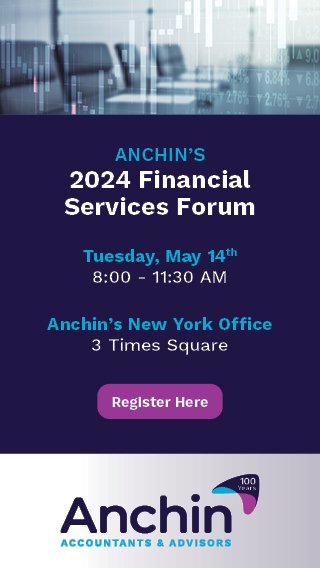Guest Opinion: In Code We Trust?
/ANURAG WAKHLU - GLOBAL BUSINESS DIRECTOR FOR DASSAULT SYSTEMS
For something to have worth and command a price, it must provide some utility, benefit or satisfaction to a buyer. Intrinsic value is the quantification of that worth. Once there is value, the forces of demand and supply in the marketplace determine price. Tangible assets such as food, a car or real estate are easy to value. Gold, which has some commercial utility in dentistry, electronics and jewelry, also enjoys intrinsic, fundamental and sentimental value. Because of this, and because of its relatively small and hard-to-increase supply, gold has been used as a currency throughout history. Fiat money has value because it can be exchanged for something of value and is backed by the fiat currency issuer – a government. Art has value because it is rare and has display value (and bragging rights value).
Bitcoin, in contrast, has no intrinsic value. It doesn’t provide an ongoing cash flow, so we can’t apply one of the most common methods of valuation – a discounted cash flow (DCF) analysis. But for a coin such as Filecoin, which provides digital storage in exchange, we can use a discounted value flow method. See an example here.
Bitcoin was meant to be a limited edition currency (21 million coins), to be exchanged for something of value. Using another valuation approach – quantity theory, which assumes that money supply times velocity equals price level times transactions (MV=PT) – the price of Bitcoin could be $3,050. But today, Bitcoin is behaving less as a medium of exchange and more as a store of value, like gold or art. Let’s delve deeper:
Currently, the cost of mining an ounce of gold is $800 to $1,000, and the metal itself is priced at about $1,300 per ounce. In contrast, it costs around $3,500-$7,000 to mine one Bitcoin, which will increase (because mining will get harder) and could provide a price floor in the long term.
Another valuation approach would be to look at Bitcoin vis-à-vis conventional currency. Assume physical money in the world totals $31 trillion. If one percent of that were to move into Bitcoin, each Bitcoin would be worth about $14,750, for a market cap of $320 billion. If five percent of the world’s $8 trillion in gold were to move to Bitcoin, that would peg Bitcoin’s price at $19,000.
Now let’s assess the potential premium for Bitcoin. The Bitcoin blockchain has been online for over seven years. It has three to six million users who have a crypto wallet, over 10 million participating nodes, and several hundred thousand merchants that accept it for payment. This growing scale, as well as its mindshare premium, provides advantages to the Bitcoin blockchain that encourage its growth as a trusted consensus network.
Implied in any value of Bitcoin is that people continue to believe in it. If that trust evaporates, so will Bitcoin’s price. Even gold and fiat money are based on trust, but they also are backed by centuries of acceptance in the case of gold and government backing in the case of fiat money.
Is mass decentralized consensus, which is what backs Bitcoin, a new asset class? One way to answer that question is to consider that volatility, which can be expressed through math-driven indices such as the VIX, is now considered an asset class. Similarly, the blockchain, which is backed by decades of cryptography research, game theory, socio-economic principles and sophisticated computer code, is just as real. So yes, the largest blockchains should have some existential value.
To be sure, Bitcoin faces competition from new Blockchain innovations, such as smart contracts, improved proof-of-work/proof-of-stake verification models, better speeds and security. It also faces competition from many other crypto coins. Plus, barriers to entry are low. Imagine, for example, if Facebook, Amazon or Google were to launch better coins, just as ‘the killer app’ email launched in the 90s. A ‘gCoin’ or an ‘f8Coin’ could easily bring a billion people on to a low-friction platform, for payments, commerce and innovative Dapps. There’s also the threat of a major technological snafu and the biggest threat of all, government regulation. Governments don’t welcome those who usurp their power, revenue streams or currency monopolies, which may be why Bitcoin is now banned in ten countries. Moreover, share spikes for companies merely associating with blockchains are reminiscent of the 90’s dot com euphoria, the subsequent crash and the emergence of real value companies. Is Bitcoin just the Myspace before Facebook?
The fundamental questions surrounding the essence of Bitcoin could very well be the drivers of its price volatility. Recently, its value plummeted by half, to $10,000. Retail investors fear that they are missing out on the next big thing, while a recent Wall Street Journal chart of CBOE Bitcoin cash-settled futures shows that large players are selling short. But buying a Bitcoin or any asset solely because you believe you can sell it for more is simply the greater fool theory in action.
But speculators beware. During the peak of the Tulip Mania, bulbs fetched almost $30,000 in today’s terms. ‘Cash-settled’ tulip futures, needing no margin, were traded in taverns. The bulbs were also used temporarily as a currency. Sound familiar? History doesn’t repeat, but apparently it rhymes.
Anurag Wakhlu is the global business director for financial services at Dassault Systemes. His interests range from leading-edge finance to bleeding-edge technology and all the business in between.







